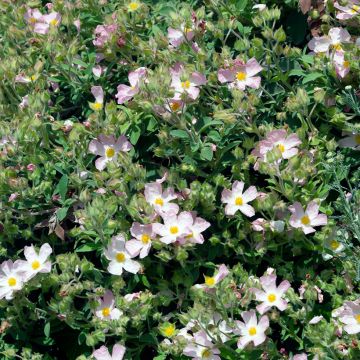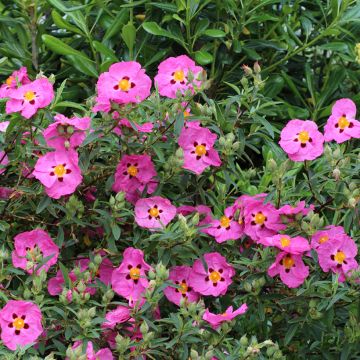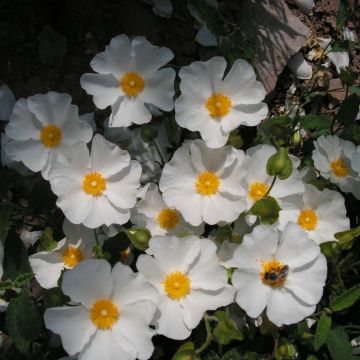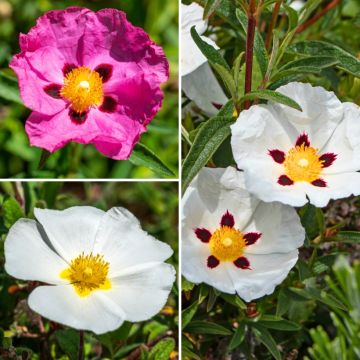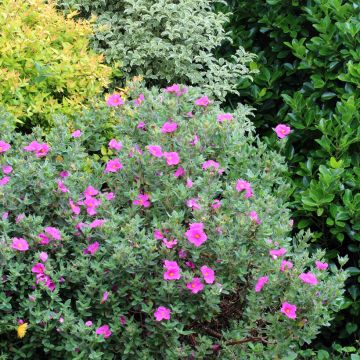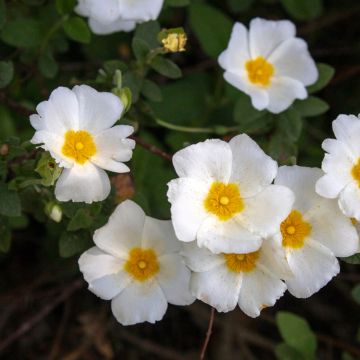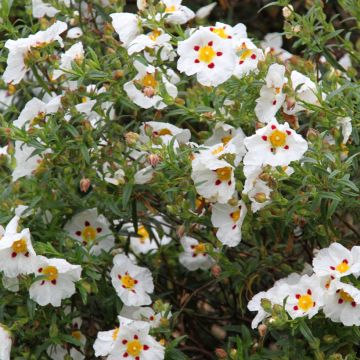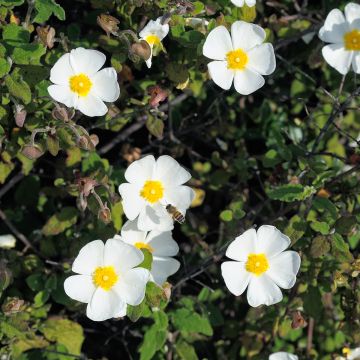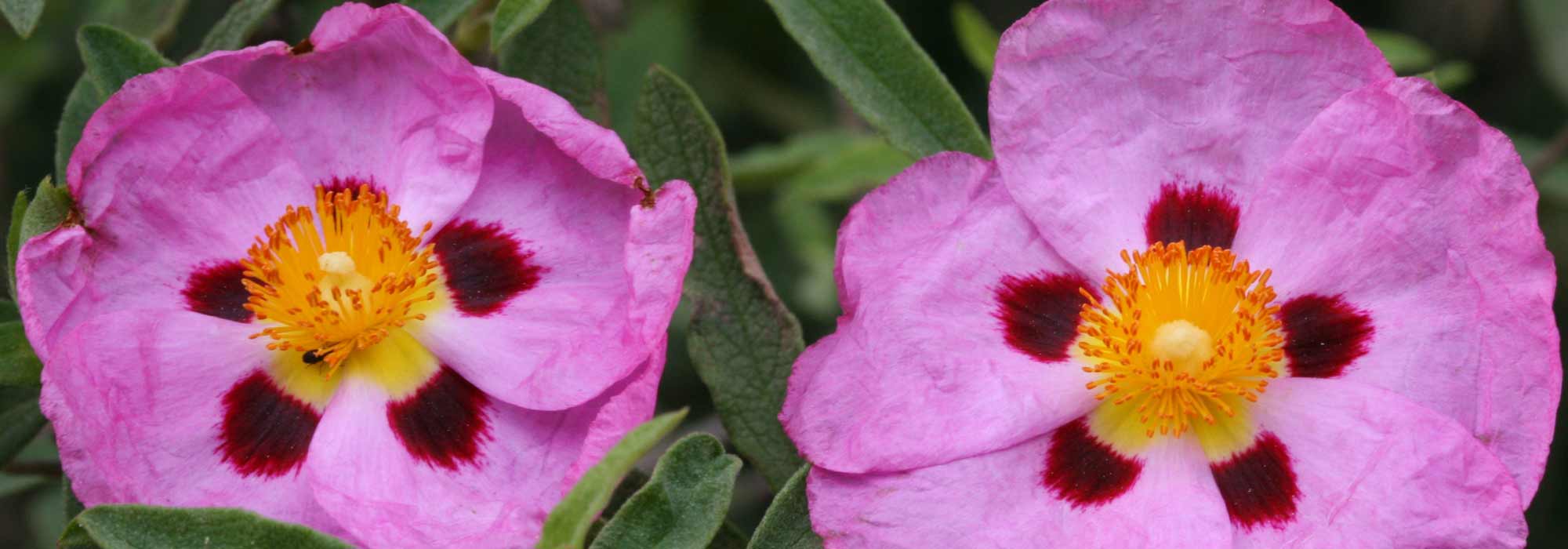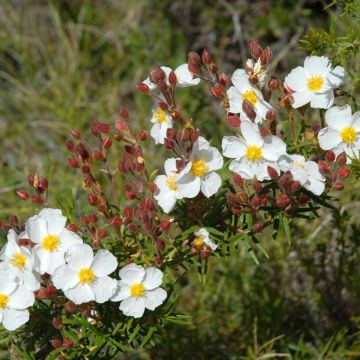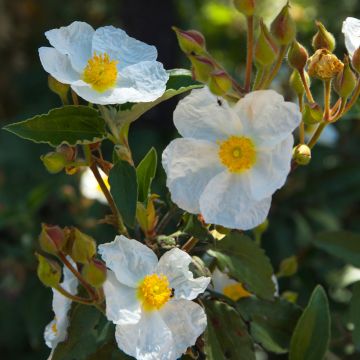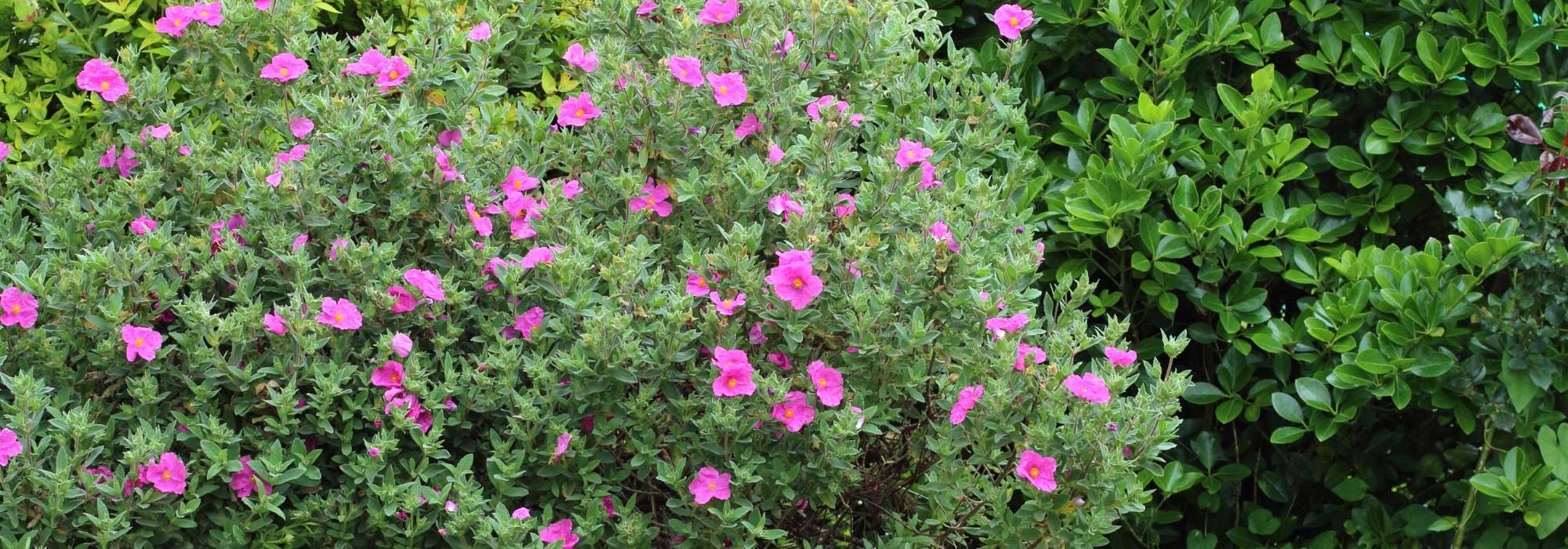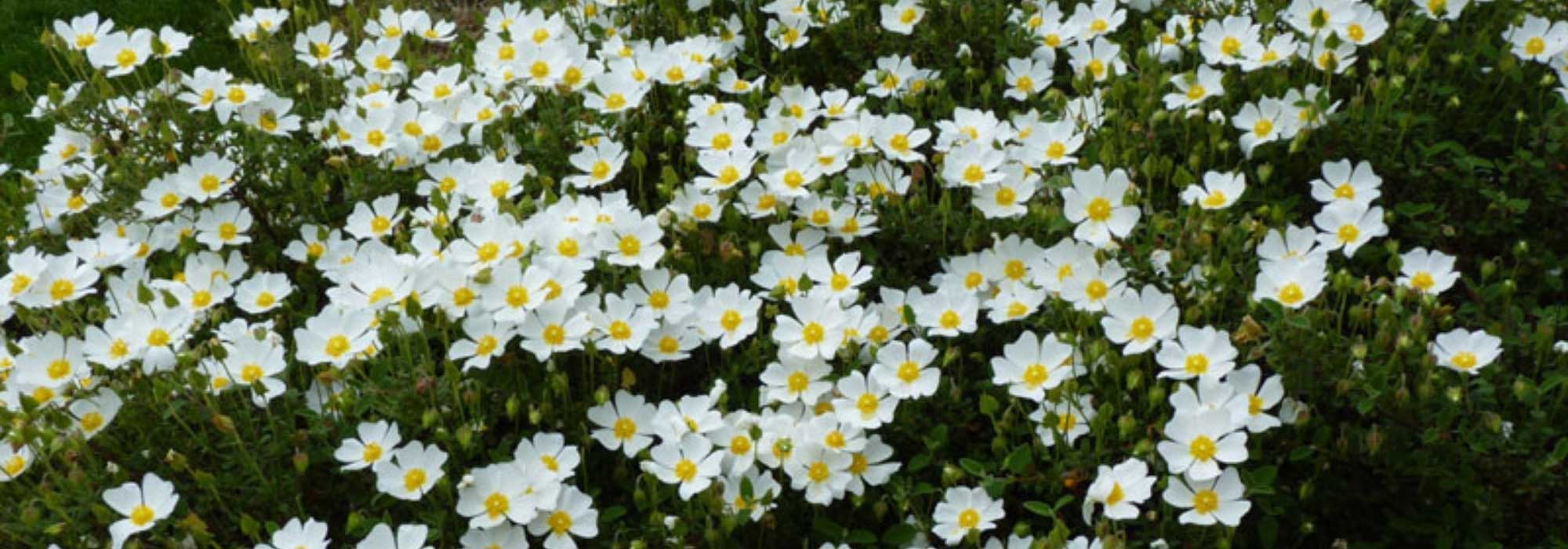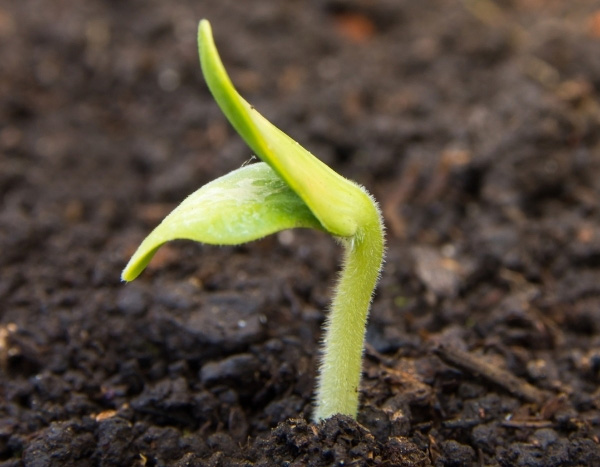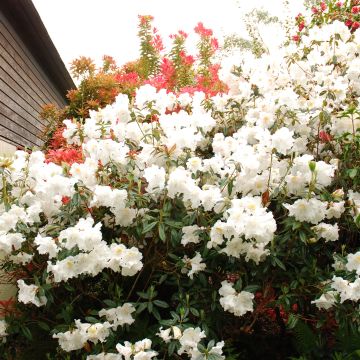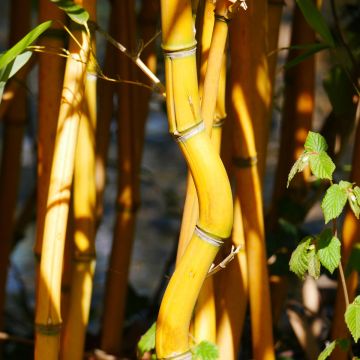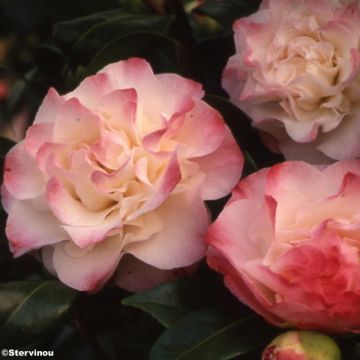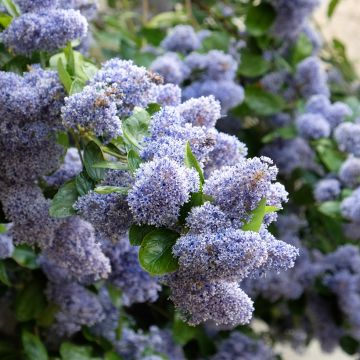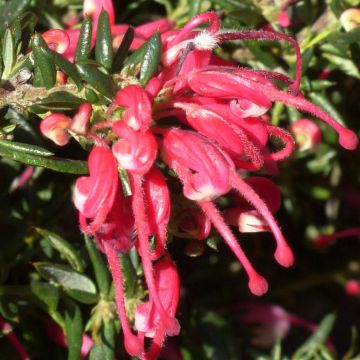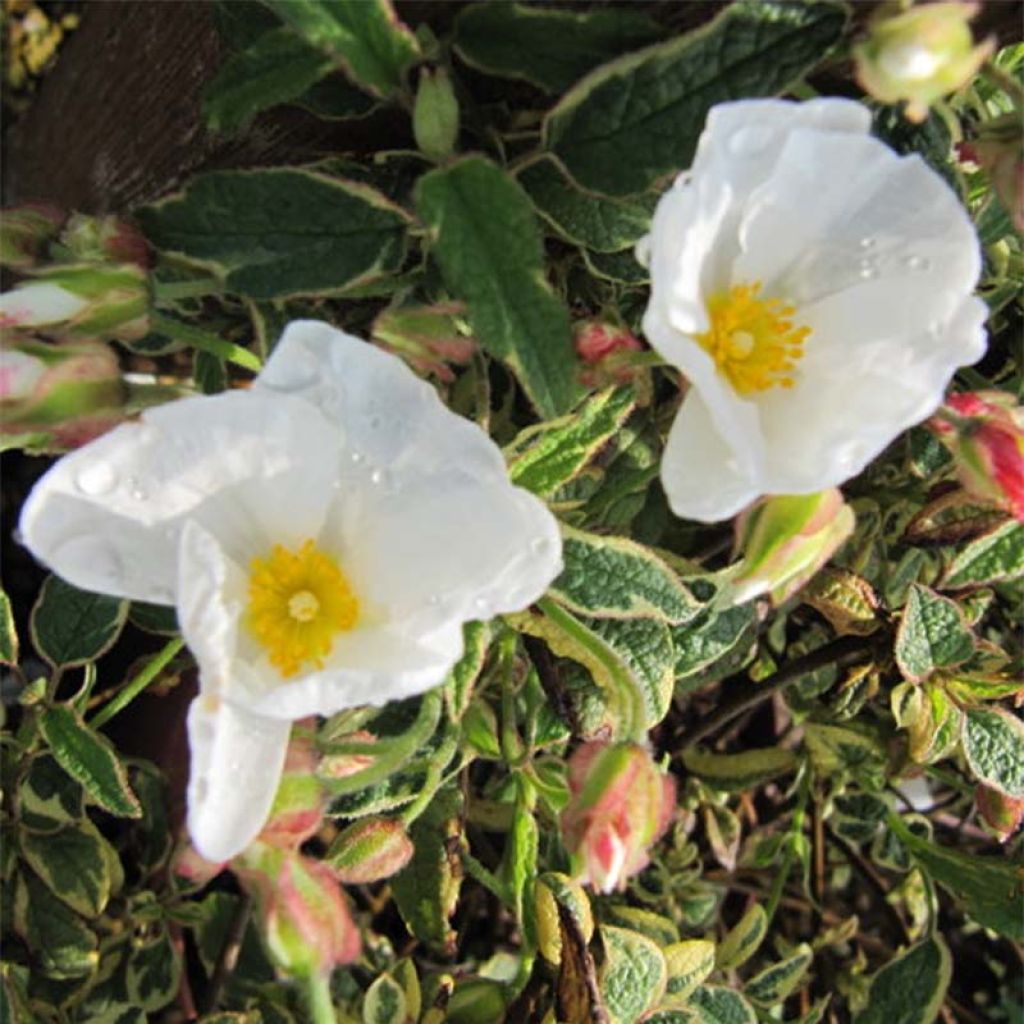

Cistus corbariensis Rospico ® - Ciste des Corbières panaché.
Cistus x corbariensis Rospico - Rockrose
Cistus x corbariensis Rospico ®
Rockrose
I have bought over 100 plants again this year and I am often VERY satisfied with my purchases from you. But for these THREE cistus corbariensis ropsico, I am not satisfied because all 3 plants received are very bare at the bottom. The stems are naked and end in a terminal bunch of leaves. I strongly doubt that the base will regenerate based on your descriptions. It's a bit like a lavender that has grown upwards without being pruned every year. It's a shame because I had bought another one that was well leafed at the base. Photo of the plants received available upon request.
Bernard DUMORTIER, 06/05/2023
Special offer!
Receive a €20 voucher for any order over €90 (excluding delivery costs, credit notes, and plastic-free options)!
1- Add your favorite plants to your cart.
2- Once you have reached €90, confirm your order (you can even choose the delivery date!).
3- As soon as your order is shipped, you will receive an email containing your voucher code, valid for 3 months (90 days).
Your voucher is unique and can only be used once, for any order with a minimum value of €20, excluding delivery costs.
Can be combined with other current offers, non-divisible and non-refundable.
Why not try an alternative variety in stock?
View all →This plant carries a 24 months recovery warranty
More information
We guarantee the quality of our plants for a full growing cycle, and will replace at our expense any plant that fails to recover under normal climatic and planting conditions.
Would this plant suit my garden?
Set up your Plantfit profile →
Description
Cistus x corbariensis Rospico is a lovely variety of bush from the Corbières region with bright, light yellow margined foliage. This evergreen Mediterranean shrub is perfectly adapted to dry and poor soils, and its hardiness is quite exceptional for the genus. It grows into a small, dense bush, forming a perfectly regular dome adorned with variegated foliage, precious for illuminating the partially shaded areas that it tolerates very well. In spring, it disappears under a multitude of small white corollas illuminated by a small yellow centre. They only last for one day, but they constantly renew themselves for about 3 weeks in spring. Cistus plants clearly express the spirit of the scrubland; to succeed in their cultivation, it is necessary to offer them what they like: a poor, well-draining soil that is dry in summer, and a position sheltered from icy winds.
Cistus x hybridus var. corbariensis is a spontaneous hybrid between C. populifolius var. populifolius and C. salviifolius, species belonging to the cistaceae family, which are found in the wild in the rocky scrubland of the Corbières. The Rospico cultivar is a recent creation from the Renault Nurseries located in Gorron, Mayenne. This 100% French bush has a dense, highly branched, and well-groomed habit. It reaches an average height of 80cm (31.5 in) and a width of 1m (3 ft 4 in). The very abundant flowering takes place before the height of summer, from April to June depending on the climate. At the tips of the branches flower buds of a reddish-purple colour appear, grouped in 2 or 3, which open up into small single flowers with a diameter of 4cm (1.6 in), formed by 5 slightly crumpled white petals. The heart of the flower is occupied by a bouquet of golden yellow stamens. Each flower disappears in the late afternoon, releasing a shower of petals on the ground. But the buds are countless, ensuring a 3-week-long flowering period. The flowering is followed by fruit resembling small baskets filled with seeds. Its leaves are evergreen, 3 to 5cm (1.2 to 2 in) long, with a rough texture. They are beautiful dark grey-green margined with pale yellow in summer, and take on pretty violet hues in winter. The root system of this cistus is both deep and branching, it is so powerful that it manages to penetrate between fractured rocks to draw the slightest trace of moisture from deep down, while its surface roots capture moisture from the topsoil. Its lifespan varies between 12 and 15 years in the garden.
The Rospico cistus from the Corbières is a rock garden and poor soil plant, perfectly adapted to drought: its fragile flowers hide a strong temperament and resilience to any challenge. Create a dry slope, evoking the scrubland, by mixing the foliage and scents of lavender (blue, white, pink), rosemary (creeping or upright), thyme (T.vulgaris, T. polytrichus), sage (Salvia x jamensis or officinalis), oregano, teucriums (T.chamaedrys, T. x lucidrys, T. hircanicum), Californian poppies, catmints, ballotas and dry soil euphorbias (E.characias, E. cyparissias). Growing in large pots is possible, by taking care there is sufficient drainage and providing the plant with abundant but infrequent watering in summer, allowing the substrate to completely dry out between waterings.
Cistus x corbariensis Rospico - Rockrose in pictures
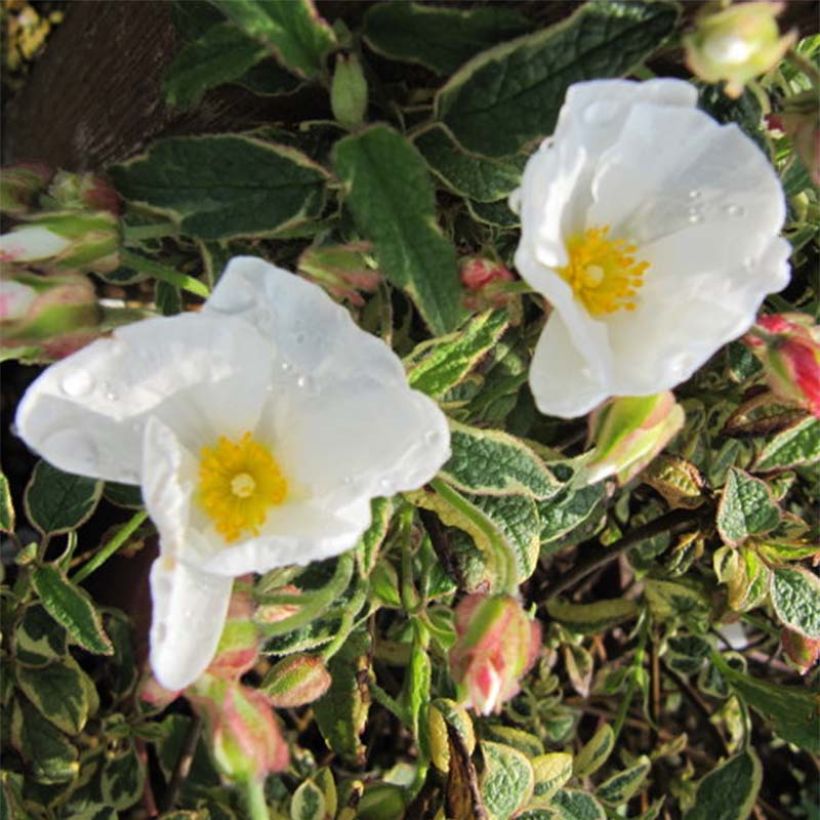

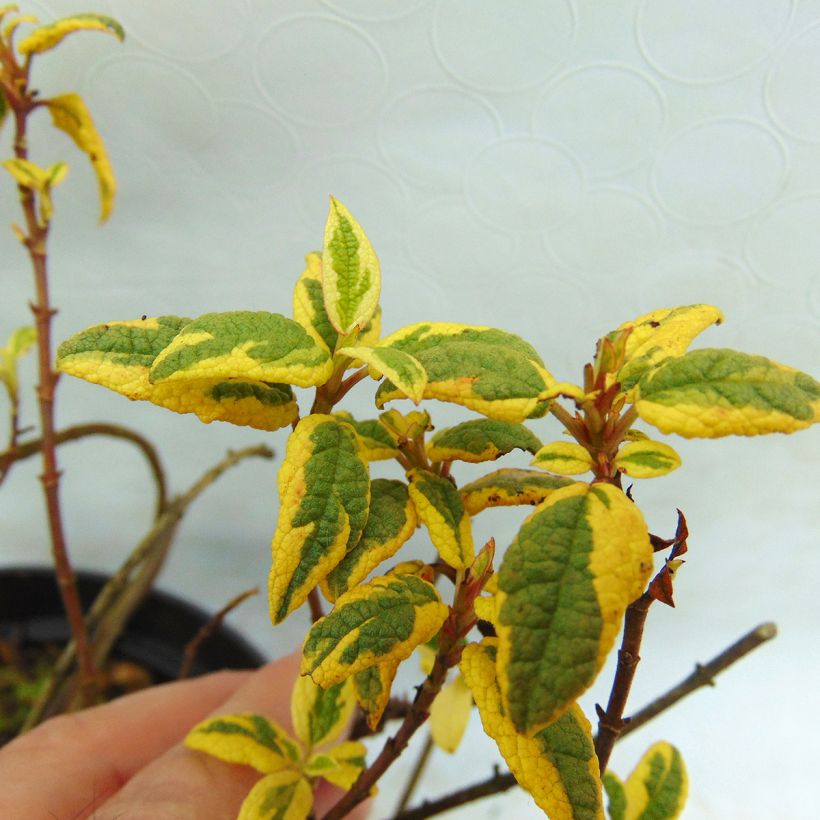

Plant habit
Flowering
Foliage
Botanical data
Cistus
x corbariensis
Rospico ®
Cistaceae
Rockrose
Cultivar or hybrid
Other Cistus - Rockrose
View all →Planting and care
Cistus corbariensis Rospico requires a perfectly drained, rocky or sandy, poor, and acidic, neutral, or slightly chalky soil. Plant it after the last frost in the north, and in September-October in hot and dry climates. It appreciates the sun but tolerates partial shade well, on the edge of the undergrowth. It does not mind root competition from large trees. In nature, it also grows in the shade of pines and evergreen oaks, but will be less floriferous. It dislikes icy winds that can destroy its flower buds. Under these conditions, it is hardy down to -12 or -15°C (10.4 or 5 °F) and will live longer. Mulch it in winter in the coldest regions and protect it from the cold as much as possible. Place it in the warmest corner of the garden, in full sun against a south-facing wall, in a rocky or sandy slope or any substrate that does not retain moisture, which would be fatal to it in winter or summer, which is its period of vegetative rest. The combination of heat and humidity leads to the development of a fungus that attacks the plant's collar and will be fatal to it as much as a Siberian cold. You can lightly prune the stems after flowering to encourage the plant to branch out. Avoid severe pruning.
Propagation by semi-ripe cuttings in autumn.
Planting period
Intended location
Care
Planting & care advice
-
, onOrder confirmed
Reply from on Promesse de fleurs
Similar products
Haven't found what you were looking for?
Hardiness is the lowest winter temperature a plant can endure without suffering serious damage or even dying. However, hardiness is affected by location (a sheltered area, such as a patio), protection (winter cover) and soil type (hardiness is improved by well-drained soil).

Photo Sharing Terms & Conditions
In order to encourage gardeners to interact and share their experiences, Promesse de fleurs offers various media enabling content to be uploaded onto its Site - in particular via the ‘Photo sharing’ module.
The User agrees to refrain from:
- Posting any content that is illegal, prejudicial, insulting, racist, inciteful to hatred, revisionist, contrary to public decency, that infringes on privacy or on the privacy rights of third parties, in particular the publicity rights of persons and goods, intellectual property rights, or the right to privacy.
- Submitting content on behalf of a third party;
- Impersonate the identity of a third party and/or publish any personal information about a third party;
In general, the User undertakes to refrain from any unethical behaviour.
All Content (in particular text, comments, files, images, photos, videos, creative works, etc.), which may be subject to property or intellectual property rights, image or other private rights, shall remain the property of the User, subject to the limited rights granted by the terms of the licence granted by Promesse de fleurs as stated below. Users are at liberty to publish or not to publish such Content on the Site, notably via the ‘Photo Sharing’ facility, and accept that this Content shall be made public and freely accessible, notably on the Internet.
Users further acknowledge, undertake to have ,and guarantee that they hold all necessary rights and permissions to publish such material on the Site, in particular with regard to the legislation in force pertaining to any privacy, property, intellectual property, image, or contractual rights, or rights of any other nature. By publishing such Content on the Site, Users acknowledge accepting full liability as publishers of the Content within the meaning of the law, and grant Promesse de fleurs, free of charge, an inclusive, worldwide licence for the said Content for the entire duration of its publication, including all reproduction, representation, up/downloading, displaying, performing, transmission, and storage rights.
Users also grant permission for their name to be linked to the Content and accept that this link may not always be made available.
By engaging in posting material, Users consent to their Content becoming automatically accessible on the Internet, in particular on other sites and/or blogs and/or web pages of the Promesse de fleurs site, including in particular social pages and the Promesse de fleurs catalogue.
Users may secure the removal of entrusted content free of charge by issuing a simple request via our contact form.
The flowering period indicated on our website applies to countries and regions located in USDA zone 8 (France, the United Kingdom, Ireland, the Netherlands, etc.)
It will vary according to where you live:
- In zones 9 to 10 (Italy, Spain, Greece, etc.), flowering will occur about 2 to 4 weeks earlier.
- In zones 6 to 7 (Germany, Poland, Slovenia, and lower mountainous regions), flowering will be delayed by 2 to 3 weeks.
- In zone 5 (Central Europe, Scandinavia), blooming will be delayed by 3 to 5 weeks.
In temperate climates, pruning of spring-flowering shrubs (forsythia, spireas, etc.) should be done just after flowering.
Pruning of summer-flowering shrubs (Indian Lilac, Perovskia, etc.) can be done in winter or spring.
In cold regions as well as with frost-sensitive plants, avoid pruning too early when severe frosts may still occur.
The planting period indicated on our website applies to countries and regions located in USDA zone 8 (France, United Kingdom, Ireland, Netherlands).
It will vary according to where you live:
- In Mediterranean zones (Marseille, Madrid, Milan, etc.), autumn and winter are the best planting periods.
- In continental zones (Strasbourg, Munich, Vienna, etc.), delay planting by 2 to 3 weeks in spring and bring it forward by 2 to 4 weeks in autumn.
- In mountainous regions (the Alps, Pyrenees, Carpathians, etc.), it is best to plant in late spring (May-June) or late summer (August-September).
The harvesting period indicated on our website applies to countries and regions in USDA zone 8 (France, England, Ireland, the Netherlands).
In colder areas (Scandinavia, Poland, Austria...) fruit and vegetable harvests are likely to be delayed by 3-4 weeks.
In warmer areas (Italy, Spain, Greece, etc.), harvesting will probably take place earlier, depending on weather conditions.
The sowing periods indicated on our website apply to countries and regions within USDA Zone 8 (France, UK, Ireland, Netherlands).
In colder areas (Scandinavia, Poland, Austria...), delay any outdoor sowing by 3-4 weeks, or sow under glass.
In warmer climes (Italy, Spain, Greece, etc.), bring outdoor sowing forward by a few weeks.






























